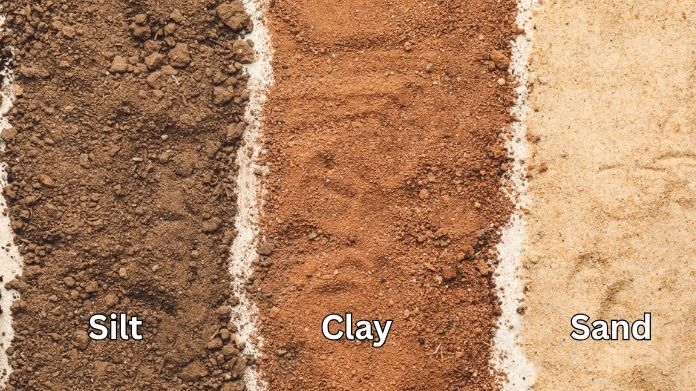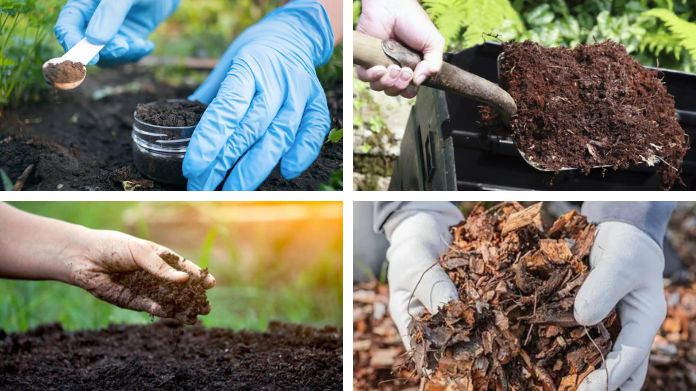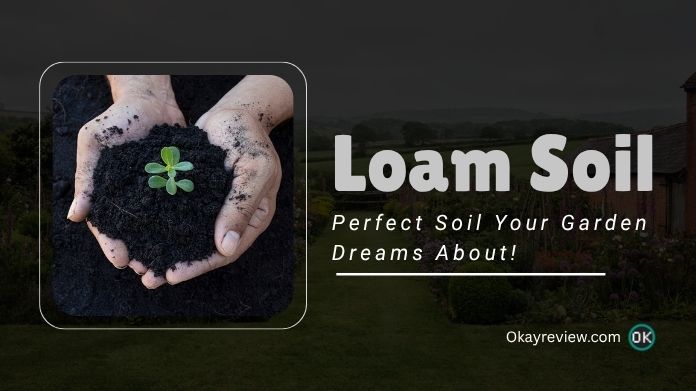Have you ever taken one look at your neighbor’s garden and thought, “How do they get such red tomatoes or huge marigolds when I’m struggling to keep alive a basil plant?”
You have probably tried watering schedules, fertilizers, maybe even talking to them (hey, no judgment!), but it seems that their garden thrives unlike yours.
So, what gives?
Here comes a little insight that the old-timers would swear by, and yet many beginners would overlook it’s the soil.
Specifically, the absolutely magical combination called loam soil. Specifically, the totally magical mix known as loam soil.
Known as the “gold standard” for gardening, loam isn’t just dirt, it’s the perfect blend of structure, nutrients, and drainage that plants absolutely love.
So, let’s get started and find out why loam soil could be what you have been missing in your garden.
Table of Contents
What Exactly is Loam Soil?
Think of it as the perfect smoothie for your garden, made up of three key ingredients:
- Sand – for good drainage
- Silt – for holding nutrients
- Clay – for water retention
 The magic happens when these three are mixed in just the right proportion to form loam soil. It feels soft and crumbly between your fingers like damp chocolate cake, and upon squeezing it, it would hold shape without going hard.
The magic happens when these three are mixed in just the right proportion to form loam soil. It feels soft and crumbly between your fingers like damp chocolate cake, and upon squeezing it, it would hold shape without going hard.
The texture enables roots to easily push through it while retaining enough water and nutrients. Loam lands in the neutral pH range, giving it more advantage.
Plants can absorb nutrients better in such an environment; and therefore it could save you so much headache as a gardener.
Why Gardeners Love Loam Soil?
Ask any seasoned gardener what kind of soil they dream of working with, and nine out of ten will say loam. Why? Because it just makes everything easier.

- Moisture balance: Loam holds water without drowning your plants. It’s like a sponge, not too dry, not too soggy.
- Nutrient-rich: The silt and organic material in loam work together to provide your plants with all the nutrients that help them grow ever stronger and brighter.
- Easy to work with: Digging with loam doesn’t feel like a curse, whether you’re planting bulbs or pulling out weeds!
- Versatile: It’s ideal for vegetables, flowers, shrubs, you name it.
How to Create or Improve Loam Soil in Your Garden?
None of us is fortunate enough to have perfect loam in our garden. But the good news? You can create it yourself with a bit of waiting around and a few natural ingredients.
Here’s how to get started:
- Test your soil: Use a simple soil test kit (available at garden stores or online) to figure out what you’re working with, more sandy? More clay? That’ll tell you how to balance it out.
- Add organic matter: Your best friend is compost. Add it to your soil to add nutrients and get the texture right. Worm castings, aged manure, and leaf mold do the trick, too.
- Balance with sand or clay: If your soil is too clay-dense, add sand. If it’s too sandy, add some clay or more compost. Take it slow, all about small adjustments over the years.
- Mulch and cover crop: Use mulch to protect and enrich the topsoil. Consider planting cover crops (like clover or rye) in the off-season to naturally improve soil structure.
Quick tip: Don’t over-till! It can really damage soil structure and destroy helpful organisms. And don’t throw away those leaves that fall during autumn, they make wonderful compost!
Loam Soil vs. Topsoil vs. Potting Soil
| Soil Type | Best For | Key Features | Examples |
| Loam Soil | Garden beds, outdoor planting | Balanced texture, retains nutrients & moisture, ideal for most plants | Planting veggies in a raised garden bed? Go with loam. |
| Topsoil | Leveling lawns, landscaping | Variable quality, may lack nutrients or structure | Need to repot your succulents? Grab some potting mix. |
| Potting Soil | Containers & indoor plants | Often soilless (peat, perlite, vermiculite), great drainage for potted plants | Just filling in low spots on the lawn? Topsoil will do the trick. |
Busting Common Loam Soil Myths
Let’s clear up a few things and let’s people often get wrong about loam:
- Myth: Loam soil is just for professional gardeners.
- Truth: In fact, it is easy to use and very forgiving. Loam is more comfortable to work with in general.
- Myth: You can’t create loam soil at home.
- Truth: With compost, patience, and a little soil smarts, you can build loam in your own yard, no fancy tools required.
- Myth: All bagged “garden soil” is loam.
- Truth: Nope! Always read the label. Many bagged mixes are just enhanced topsoil or potting blends.
Loam isn’t magical fairy dirt, it’s just smart soil science in action.
Wrapping Up
So there you have it. Loam soil is the unsung hero of every flourishing garden. It stores just the right amount of water, delivers nutrient loads, and makes gardening bliss from day one.
So if your plant has survived so far, do not blame your thumb just yet, but rather check the soil for its faults. A little work towards building some loam soil could turn your garden from patchy and messy to luscious and rewarding.
Because in the end, it is really simple:
Better soil = better plants = happy and confident gardener.
And isn’t that what we all strive for?

